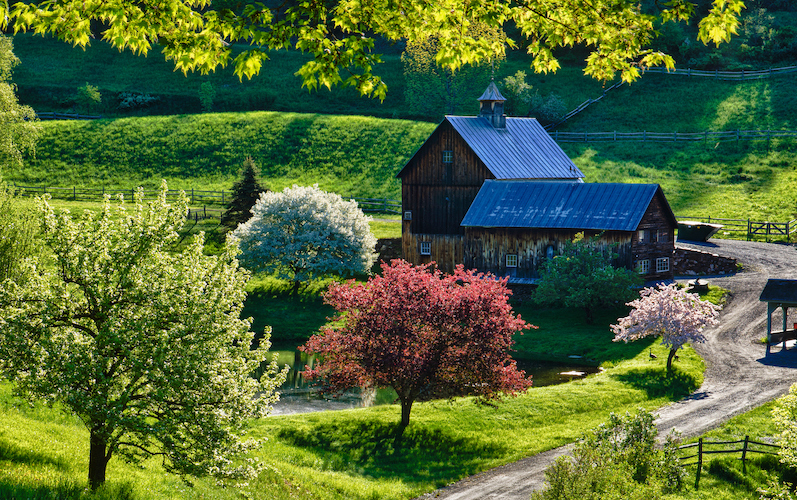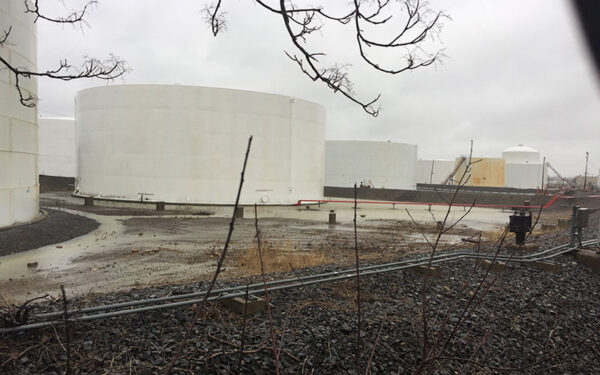
A farm in Pomfret, Vermont. Photo: Ecophotography.
In 2020, CLF and our partners led the charge for Vermont’s Global Warming Solutions Act: a landmark law committing the state to slash its climate-damaging emissions.
Climate change is already happening in Vermont. Our communities, economy, and traditional ways of life are at risk from the impacts we can see today. We’re already experiencing shorter winters and sugaring seasons, more floods and droughts, poorer air quality, and so much more. With steep climate goals to meet, Vermont’s Climate Council set to work drafting a Climate Action Plan that will help prevent these harms from getting worse.
The Council released the Climate Action Plan on December 1, 2021. There will be opportunities to review the plan over the coming months – and we’ll need your help urging revisions to achieve its greatest potential. So, let’s look at what the plan got right, what needs some work, and what comes next.
The Good
There’s a lot to celebrate in the Climate Action Plan. Here are a few things we’re particularly excited about:
- A 100% carbon-free or renewable electricity standard: A tremendous step towards slashing polluting emissions, this standard could require that all electricity in Vermont comes from either carbon-free or renewable energy sources.
- Equity: The Council recommends that communities overburdened by climate impacts help create solutions at the government level. We can’t expect policies or programs to be equitable if the way they were crafted was not.
- Smarter buildings mean a healthier climate: The Council’s plan includes new weatherization goals and building code standards that can help lower energy use, improve air quality, and help us withstand climate impacts.
- Measuring future effects of today’s emissions: The proposed “social cost of carbon” will allow Vermont to calculate how much we’ll have to pay in the future for consequences like health care costs and disaster relief because of the carbon pollution we emit today. Those future costs will be expensive unless we act quickly to cut emissions now. Knowing those costs helps us create wise policies today to ease future burdens on our children and grandchildren.
But the Climate Action Plan Isn’t Perfect
While there’s a lot we’re happy to see in the plan, a few additions concern us. It can be easy to miss these details, so we’ve pulled out a few of them here.
- Renewable doesn’t mean zero-emission: Some renewable energy sources still emit significant amounts of climate pollution, like hydrogen or “renewable” natural gas. That’s why we need a 100% carbon-free energy standard, not a renewable standard.
- Clean heating should actually be clean: A recommended clean heat standard aims to lower climate pollution from the ways we heat and cool our buildings. That standard could be game-changing, given that buildings make up Vermont’s second-largest source of polluting emissions. But the recommendation needs to be specific about how we’ll replace fossil fuels. We should not adopt a policy that would replace one polluting heat source with another. We need low- or zero-carbon heat.
- Government and public programs must be part of the solution: Vermont desperately needs actual requirements for state government and public service companies to account for climate change in their decision-making and long-term planning. Without mandates to adapt to the changing climate, our water and wastewater systems, energy facilities, and government programs may not act with the urgency we need.
- Electrifying and improving transportation go hand in hand: Transportation is the biggest source of climate-warming emissions both nationally and in the state. Electrifying our vehicles with clean electricity sources is critical to reaching the targets in Vermont’s climate law. But we can’t stop at electric cars and trucks. We still need improved transportation options and access so that more people can walk, bike, or take public transit.
- We all must do our part – and that includes major corporations: We can’t let GlobalFoundries, Vermont’s single largest greenhouse gas emitter, off the hook. Under the current Climate Action Plan, they are not required to make any specific cuts to their climate-damaging emissions. If Vermont’s largest polluters don’t do their part, the rest of Vermont’s businesses and families will need to make up for their inaction.
- Communities most impacted were left out of planning: The process used when creating this plan did not adequately include communities overburdened by climate impacts. Inadequate outreach, lack of accessibility (such as translation and interpretation services), short listening sessions, and a confusing process made attempts at inclusion relatively ineffective. Vermonters most impacted by climate change should play a major part in creating climate policy.
We’ll Need Your Support for What Comes Next
The Climate Council will revise the plan through the winter. We’ll be engaging with council members to help ensure that Vermont reaches its climate goals – but we’ll need your help urging the Climate Council to revise the plan. We’ll let you know when you can make your voice heard.
The Climate Action Plan’s release shows us how far we’ve come in acting on the climate emergency. But our work is far from done, and we’re ready to continue fighting for a healthy climate for all Vermonters.



